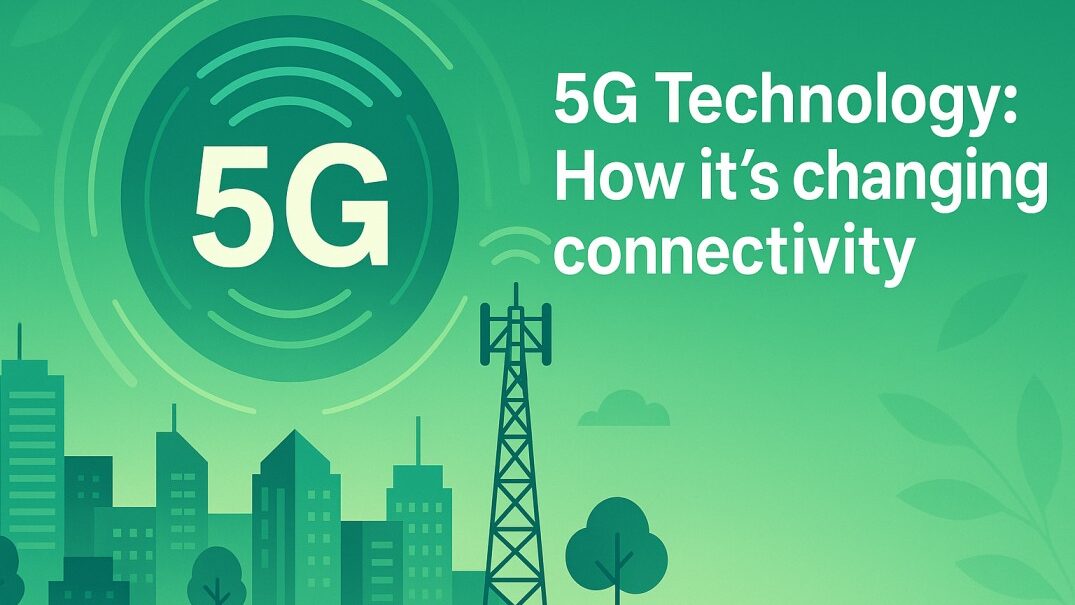5G Technology: How it’s changing connectivity
5G Technology: The Revolution That’s Changing Our World
Ever since the “5G” icon started appearing on our phones, we’ve heard a lot of buzz. But what is 5G, really? It’s not just a faster version of 4G. It’s a fundamental shift in how we connect to the world, and it’s already reshaping our daily lives and powering the future of technology.
In simple terms, 5G is the fifth generation of wireless technology. It offers three major improvements over its predecessors: blazing-fast speeds, ultra-low latency, and the ability to connect a massive number of devices simultaneously. These three pillars are the foundation of a whole new era of connectivity.
From Streaming to Smart Cities: The Real-World Impact
While faster downloads are the most immediate benefit you’ll notice, 5G’s true power lies in its ability to enable revolutionary applications that were previously impossible. Here’s a look at how 5G is already changing the game:
- Entertainment and Gaming: Say goodbye to buffering! 5G makes it possible to stream high-definition movies and TV shows instantly, even in crowded areas. For gamers, ultra-low latency means a lag-free experience, allowing for console-quality gaming on the go. This also paves the way for truly immersive Augmented Reality (AR) and Virtual Reality (VR) experiences.
- The Internet of Things (IoT): The IoT refers to a network of physical devices, vehicles, and home appliances that are embedded with sensors, software, and network connectivity. 5G’s capacity to connect millions of devices at once is the key to unlocking the full potential of IoT. Imagine smart homes where all your devices—from your thermostat to your refrigerator—communicate seamlessly. Or smart cities that use sensors to optimize traffic flow, manage waste, and improve public safety in real time.
- Healthcare Transformation: 5G is a game-changer for the medical field. It enables remote patient monitoring, allowing doctors to keep a constant eye on patients’ vital signs and deliver virtual consultations. The low latency is especially critical for remote surgery, where a surgeon can operate on a patient from a different location with near-instantaneous feedback.
- Autonomous Vehicles: The future of self-driving cars depends on 5G. These vehicles need to communicate with each other and with infrastructure instantly to navigate safely. The low-latency and high-speed data transfer of 5G is the essential ingredient for making this a reality. It’s the difference between a car reacting in milliseconds versus seconds, which can mean life or death on the road.
- Manufacturing and Industry 4.0: 5G is revolutionizing factories and industrial operations. It enables real-time monitoring of machinery, predictive maintenance to prevent costly breakdowns, and the use of automated robots and drones. This leads to increased efficiency, productivity, and safety in the workplace.
What’s Next? The Future is Now
The rollout of 5G is still a work in progress, but its impact is undeniable. As the network becomes more widespread and robust, we will see even more innovative applications emerge. The technology is also laying the groundwork for the next generation, 6G, which promises even faster speeds and more incredible possibilities.
5G is more than just an upgrade; it’s the foundation for a smarter, more connected, and more efficient future. It’s changing how we work, live, and play, and we’re just at the beginning of this incredible journey. Stay tuned—the best is yet to come!






5G technology is truly revolutionizing the way we connect and communicate. The impact of 5G on connectivity is incredible — faster speeds, lower latency, and more reliable networks are transforming industries and everyday life. It’s exciting to see how 5G and IoT together are powering smart cities and creating new opportunities for businesses. The future of 5G networks definitely looks promising!